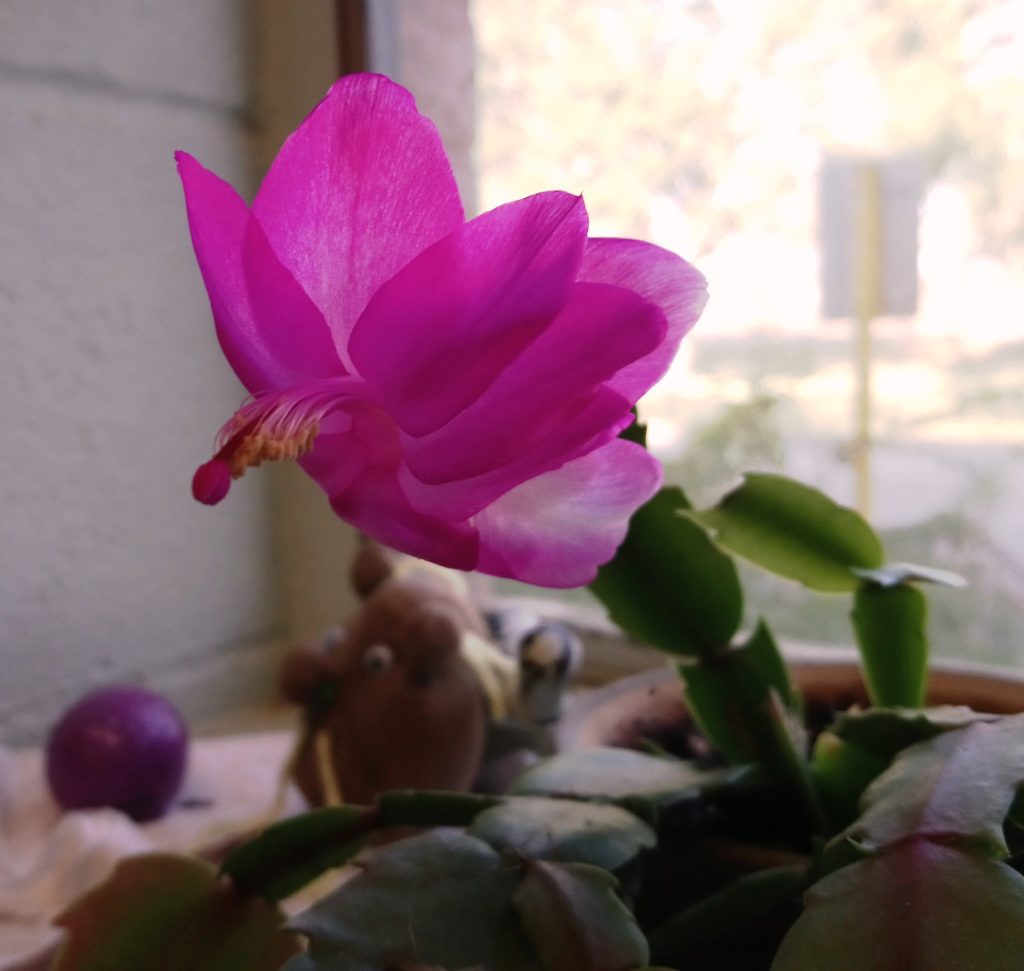Nothing brings indoor cheer to my household more than a Christmas cactus in bloom. This group of cactus are easy to care for and unique in the plant world, and I would like to share their origin, offer tips to identify two popular species and give you the gift of simple care tips.
There are three out of seven of this cactus species that are sold in the popular market: Christmas cactus (Schlumbergera x buckley), Thanksgiving cactus (Schlumbergera truncata) and Easter cactus (Hatiora gaertneri). Thanksgiving cactus has been in cultivation in England since the early 1800s. These cacti grow as epiphytes (non-parasitic, growing in leaf litter on tree branches or rock crevices), species originating in the Organ Mountain range just north of Rio de Jaineiro, Brazil. Individual species are reported endangered or threatened with extinction in their native habitat due to residential development and population fragmentation.
When we look at the plants, what we naturally call “leaves” is gracefully arching, dark-green photosynthetic flattened stem segments. The beauty of these plants lie in their architecture and their blooms: these unique cactus seasonally produce vibrantly colored tubular flowers, hybridized to elicit colors ranging from eye-popping fuschia, deep red, translucent peach to snow white.
You may have a species that blooms completely out of season and is sold as Christmas cactus, making it a little tricky to tell the species apart. Under the right growing conditions, Thanksgiving cactus (S. truncata) will naturally bloom earlier in the fall and looks a little different, producing toothed margins at each segment. Christmas cactus (S. x buckley) blooms around this time of year and has rounded margins. The key to flower production is related to photoperiod; each species initiates blooms when daylight periods shorten between 8 to 10 hours and longer nights. Skilled florists and hobbyists can initiate blooms out of season by modifying exposure to light. They will also bloom when combined with cooler nighttime temps between 50 to 55-degrees, typical of our fall season and will not initiate bloom at nighttime temps above 65 degrees.
They cacti make great hanging basket and container plants, are fairly easy to care for and typically decline from overwatering. Use a well-draining medium high in organic matter for potting. Let the soil dry slightly between watering to keep the plant from getting waterlogged. They can be kept near a window indoors year round, and under cover of a patio as weather temperature permits. These holiday cactus can continue to bring joy during this season with just a little bit of care of knowledge.

